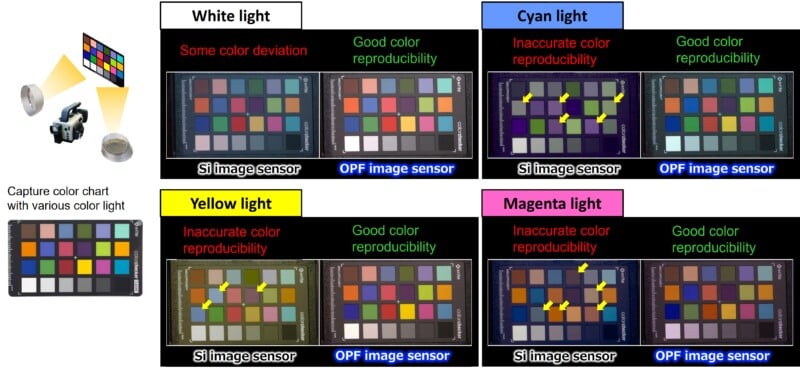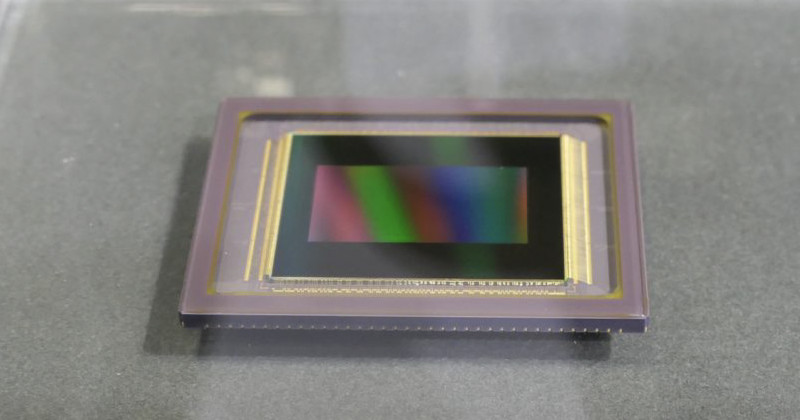![]()
The future of Panasonic’s organic sensor, a global shutter technology it has been developing with Fujifilm since 2013, doesn’t look promising.
After saying in 2023 that it had hopes to commercialize it in “the next few years,” the organic sensor likely isn’t going to find its way into a camera any time soon — if ever.
Last year, DPReview‘s Richard Butler explained that the sensor appears to have reduced crosstalk, which basically means that the red, green, and blue pixels of the sensor collect only their intended color and that light — regardless of type and color cast — won’t spill across each pixel and therefore muddy color reproduction.

That sounds great, but so did the promise of a global shutter with 100 times the sensitivity of conventional sensors. The most we’ve seen is theory and charts. Even though Sony’s a9 III comes with dynamic range tradeoffs, at least it’s in the market.
The fact of the matter is that the benefits of the organic sensor are far less impressive now than they were in 2013. The promises of excellent low-light performance and significantly better dynamic range will have to be weighed against the sensor technology of today, not those available more than a decade ago.

And that’s assuming it even works. Other than seeing it in a display case, the organic sensor has spent all of its time in the theoretical.
Tomoki Nakanishi, Supervisor at Panasonic’s Imaging Business Unit, spoke to PetaPixel at the CP+ exhibition in Yokohama last month and explained that while it is available — or close enough to it — and could be considered by its camera designers for use in its cameras, that has not happened.
“If we [make a] new camera, we can choose that kind of sensor,” Nakanishi says, referring to the organic sensor. “But it’s kind of an R&D matter. So it is not [certain] that we will use that sensor in the next camera or not.”
He says that while the company is very open to new technologies in its development stage, they have to balance the pros and cons of what they choose and, to this point, the organic sensor hasn’t been selected based on that analysis.
PetaPixel put it this way: “You’ve made it, but you don’t know whether or not you’ll use it.”
To which Nakanishi responded: “Yeah.”
There are unlikely many who still remain hopeful that Panasonic’s organic image sensor will ever find its way into a new camera as there have been multiple signs over the last few years that have cast doubt on the sensor’s viability.
“We are proud that we are in a position that is close to commercialization. We cannot say when it will be possible because we have customers, but the development side wants to commercialize it in a few years,” a company representative said last year.
Now 11 years on, the organic sensor feels no closer to release and Panasonic’s language seems to indicate that it, internally, is choosing not to select the organic sensor for its own projects. By that logic, why would anyone else?
As mentioned last year, Sigma gets most of the attention when it comes to sensors stuck in development hell, but at least the company’s CEO Kazuto Yamaki has been open and forthright about the progress of the full-frame Foveon sensor.
At this point, it’s probably safe to not expect to see a camera using Panasoic’s now-fabled organic sensor. I love Panasonic cameras and used them extensively in my professional work for years. A majority of PetaPixel‘s YouTube videos are shot on Panasonic cameras. They’re fantastic and we don’t need the organic sensor to be a monumental hit for the company to keep making winners. It’s okay to leave this decade-long experiment behind.
I poked fun at this sensor last year when I alluded that it was as good as stuck in the Phantom Zone, and I haven’t seen anything this year that changes my opinion.
